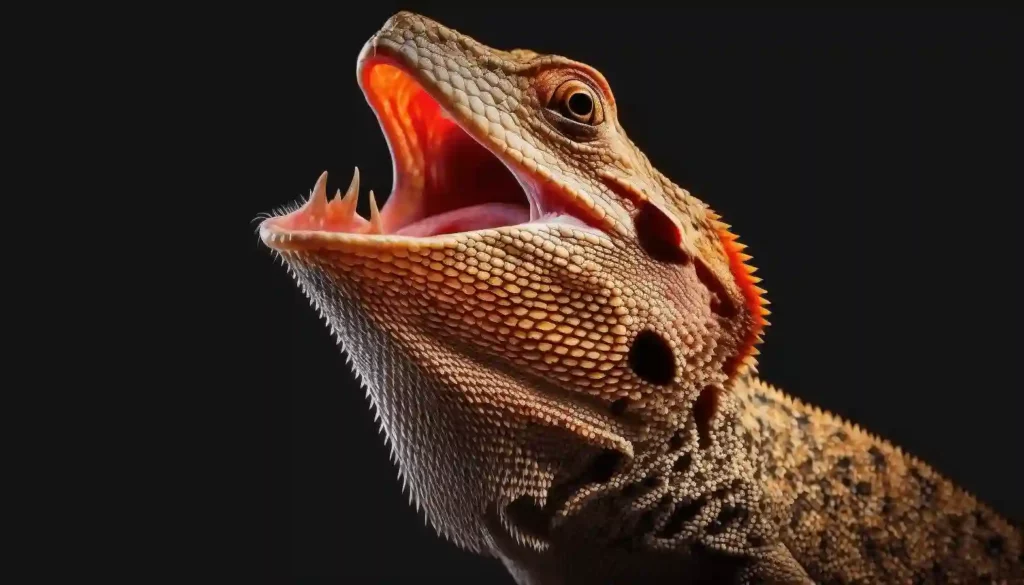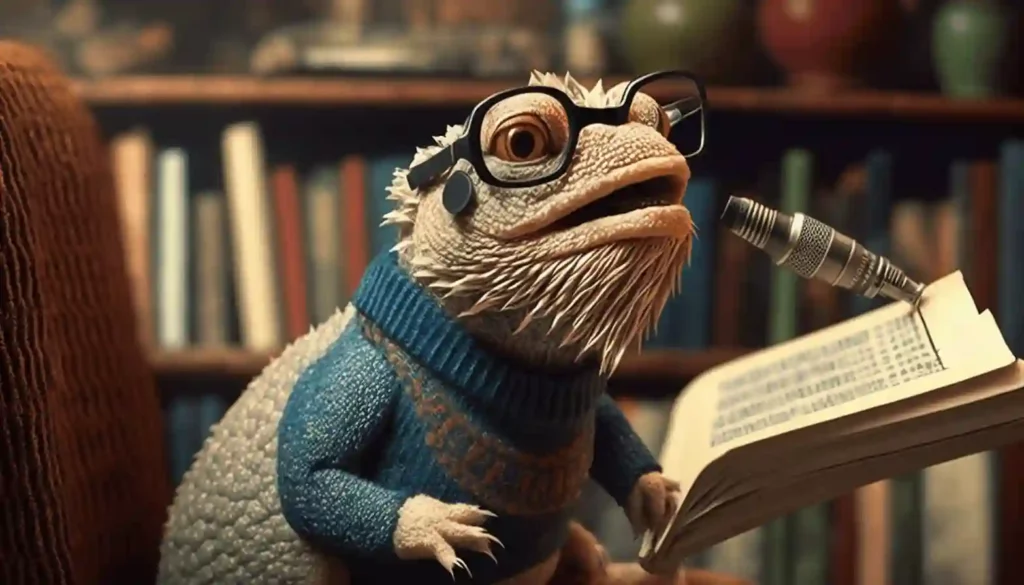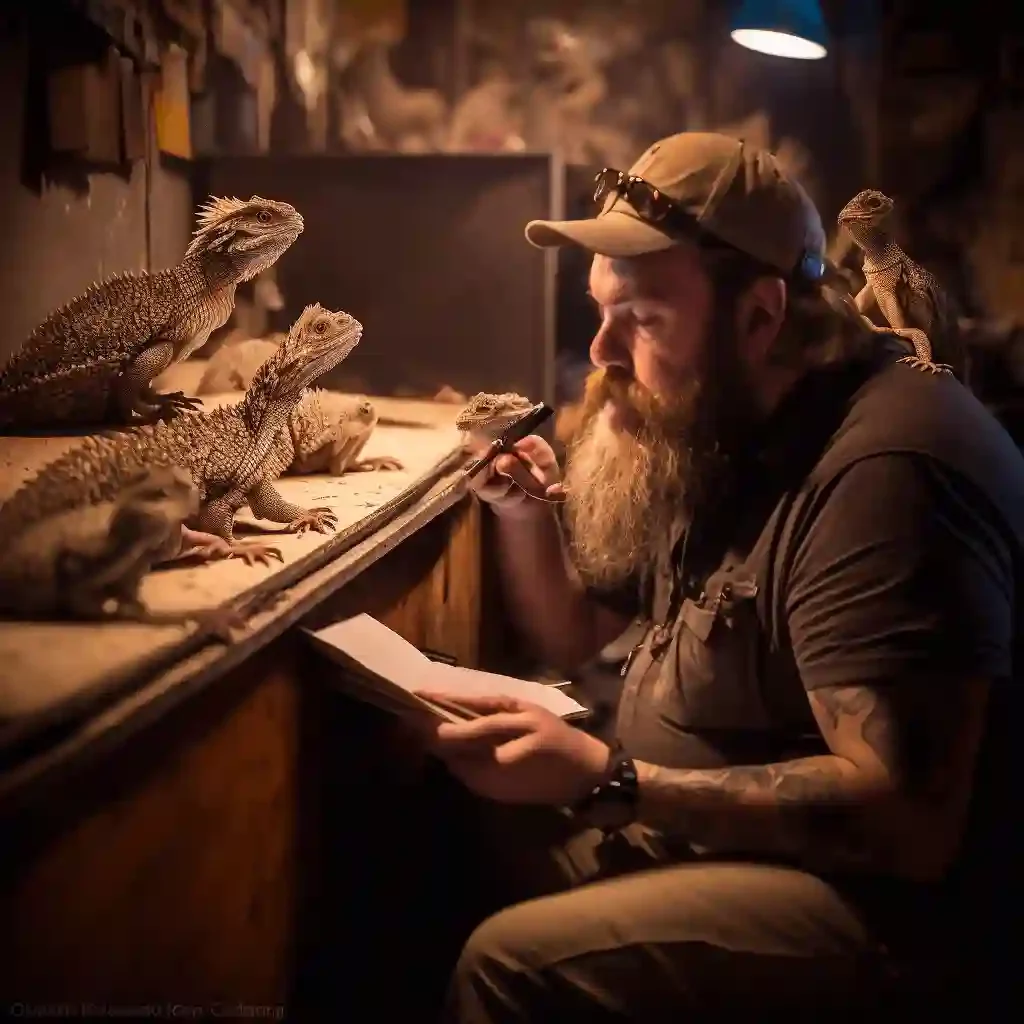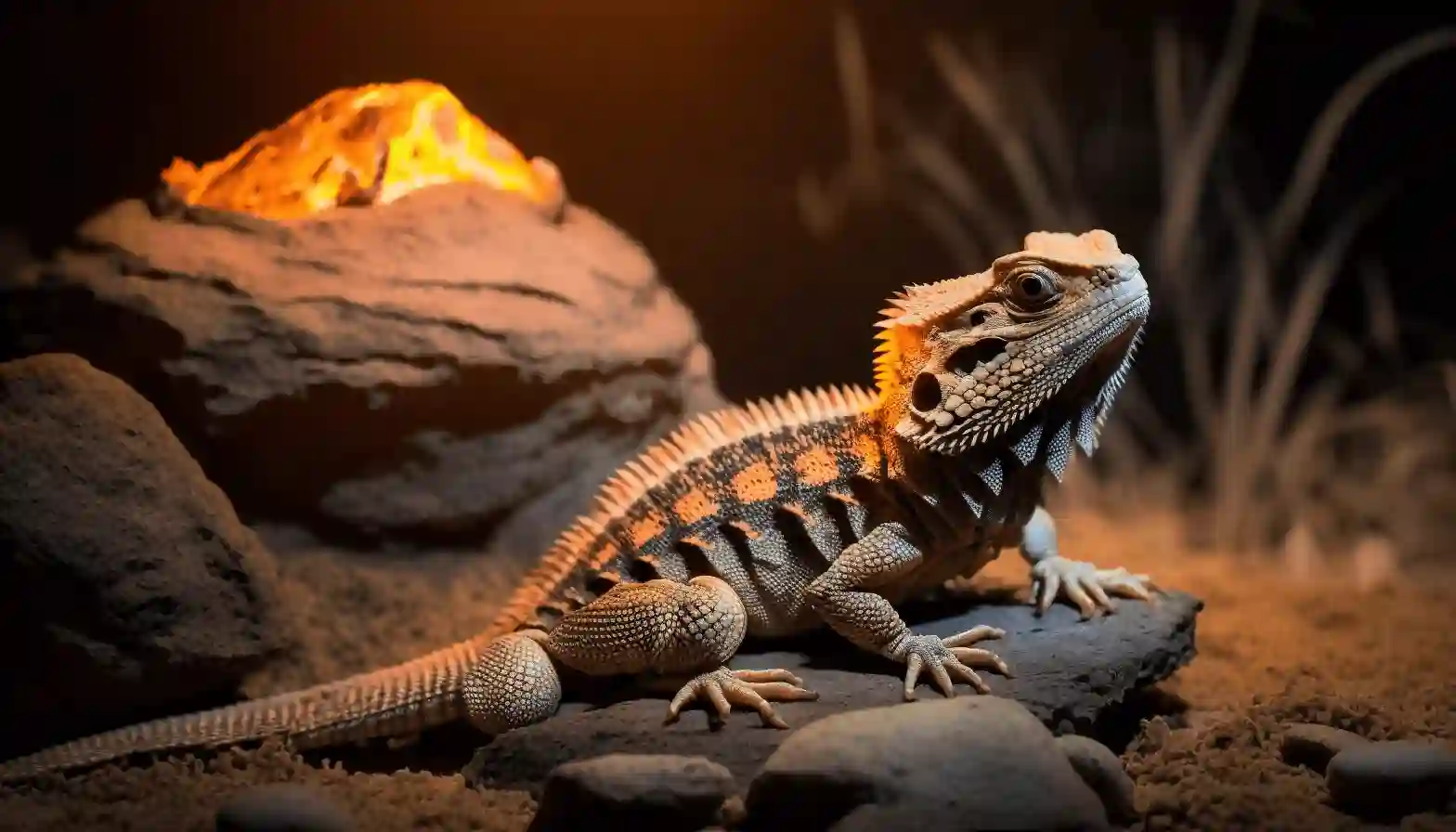Yes, Bearded dragons can make some noises such as hissing, burping, whistling, rasping, huffing, and clicking. They do not have vocal cords and are not able to make loud noises like cats or dogs. In general, bearded dragons are known to be fairly quiet and use body language to communicate.
The noise that bearded dragons make is closely associated with breathing problems and respiratory infections.
If they do make other noises, this can be due to their claws rubbing against the glass when they dig or parts of their body hitting the glass when they are glass surfing.
It is important to pay attention to the sounds your bearded dragon makes because some of them can signal health issues.
Characteristics Of Bearded Dragons
The bearded dragon is a captivating species of reptile that has long been admired by many.
They possess an array of impressive characteristics, from their scaly skin to the length of their tail, which make it easy to understand why they are so popular.
Scales cover most of the body and head of this unique creature – ranging in coloration from yellowish-tan to brown to reddish-orange.
The size and shape of these scales can vary depending on the habitat in which they live; those living in desert areas generally have larger scales than those inhabiting grasslands or forests.
Some beardies may display spines along the back or sides of their bodies as well.
This makes them appear even more fascinating.
Their diet consists mainly of insects such as crickets, locusts, and mealworms but also includes leafy greens like lettuce, kale, and spinach.
As for habitats, bearded dragons usually inhabit arid regions with plenty of sunlight due to their need for warmth during digestion.
Though there are exceptions – certain individuals will be found in wetter climates if resources allow for it.
Sounds Of Bearded Dragons

Bearded dragons can make a variety of noises, but they are generally a quiet type of reptile. Here are some of the most common sounds that bearded dragons make:
- Hiss: Hissing is a fairly common noise that many bearded dragons make when they feel stressed, anxious, or threatened.
- Purr: On occasion, a bearded dragon will make a noise that is similar to a purr. This is usually a sign that they are feeling content and relaxed.
- Huffing: Bearded dragons may make a kind of huffing sound while they eat. Depending on what is on the menu, you may also hear them making crunching, chewing, popping, or grinding sounds, which are all normal noises for them to make.
- Digging: Bearded dragons may make a scratching or digging noise when they are trying to burrow or dig in their enclosure.
- Glass surfing: Bearded dragons may make clicking noises when they engage in glass surfing, which is when they repeatedly climb up and down the sides of their enclosure.
It’s important to note that bearded dragons do not have vocal cords and are not able to make any noises.
However, they can still communicate through body language and the noises they do make can serve as signs of how they are feeling or if something is stressing them out.
If you notice any unusual noises or behaviors in your bearded dragon, it’s always a good idea to consult with a veterinarian to ensure that they are healthy and happy.
Reasons For Vocalization
Bearded dragons are known to make a variety of vocalizations, ranging from hissing to barking.
Recent studies show that up to 55% of bearded dragons exhibit some form of vocalization in their natural habitats (Krakauer et al., 2019).
The reasons for this behavior can be related to several factors such as territoriality, dietary needs, stress levels, environmental conditions, and social interactions.
The most common reason why bearded dragons may vocalize is due to territoriality.
Bearded dragons will often use vocalizations as a means of asserting dominance over other animals in the area or even territory marking when they feel threatened.
This could explain why males tend to emit louder noises than females (Takagi & Ueda, 18).
Loud noises may serve as a way for them to ward off potential predators that enter their domain.
In addition to territoriality, diet-related issues can also be attributed to vocalizations exhibited by bearded dragons.
If these lizards do not receive adequate amounts of food or nutrients, they may become stressed and anxious which can lead them to produce more frequent sounds (Leyhausen et al. 2017).
As mentioned before, when beardies experience higher levels of stress they usually resort to making louder noises as an attempt at self-defense against perceived threats.
Lastly, environmental factors like temperature fluctuations or overcrowding can contribute to increased vocalization rates among bearded dragons (Marinov et al. 2020).
During periods when individuals interact with each other socially their noise production tends to increase due to their heightened level of excitement (Taniguchi et al.2016).
Understanding why bearded dragons make certain types of noises can help us gain insight into their overall health and well-being while providing us with clues on how we should respond properly if we encounter one in its natural habitat.
It is therefore important that we take the time needed to observe our pet’s behaviors so that we can provide it with the best possible care it deserves.
Mimicking Human Speech

Bearded dragons have the ability to mimic human speech, as demonstrated by research conducted on teaching bearded dragons.
This includes imitating voices and recognizing certain sounds produced by their owners.
It has been reported that some are even capable of learning how to talk with voice recognition techniques.
It is not known if bearded dragons fully understand the meanings behind words they repeat or learn to use them for communication purposes; however, it can still be a fascinating experience hearing them imitate various noises from humans such as laughter, singing, whistling, and more.
With continued practice and patience, one may find success in teaching a pet beardie to recognize simple phrases or commands making training easier than ever before.
Training And Interacting With Bearded Dragons

“An ounce of prevention is worth a pound of cure”, and it could not be more true for the pet care of bearded dragons.
Socializing and bonding activities with your reptilian companion are key to building trust between you and your dragon.
There are several techniques that can be employed to ensure positive interaction:
- Appropriate handling– Handle your dragons regularly to get them comfortable with human contact. This will help establish a bond but do so gently while using both hands.
- Pet Care– Ensure they receive adequate nutrition by providing fresh greens, vegetables, and insects as part of their diet; additionally provide clean water daily and change out the substrate in their enclosure weekly or biweekly depending on its condition.
- Enclosure setup– Provide an appropriate habitat size based on the age and size of your dragon and fill it with items such as rocks, branches, hides, etc., for climbing and basking areas that mimic its natural environment.
Taking these steps into account when interacting with bearded dragons will create strong bonds between you two while avoiding any potential problems from occurring in the future.
With proper training through consistent practice comes better understanding between yourself and your scaly friend – this is one way to show how much you care about them.
